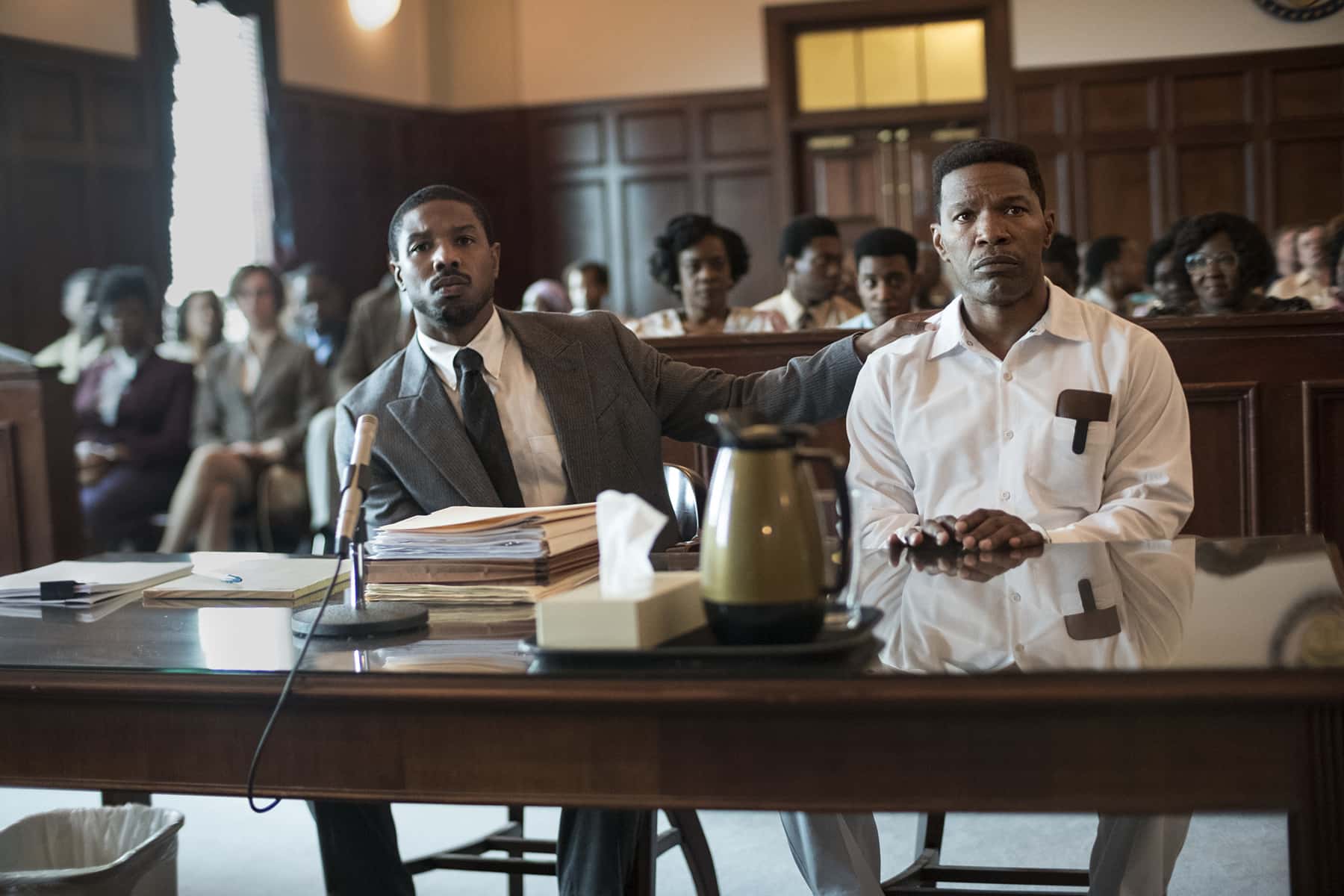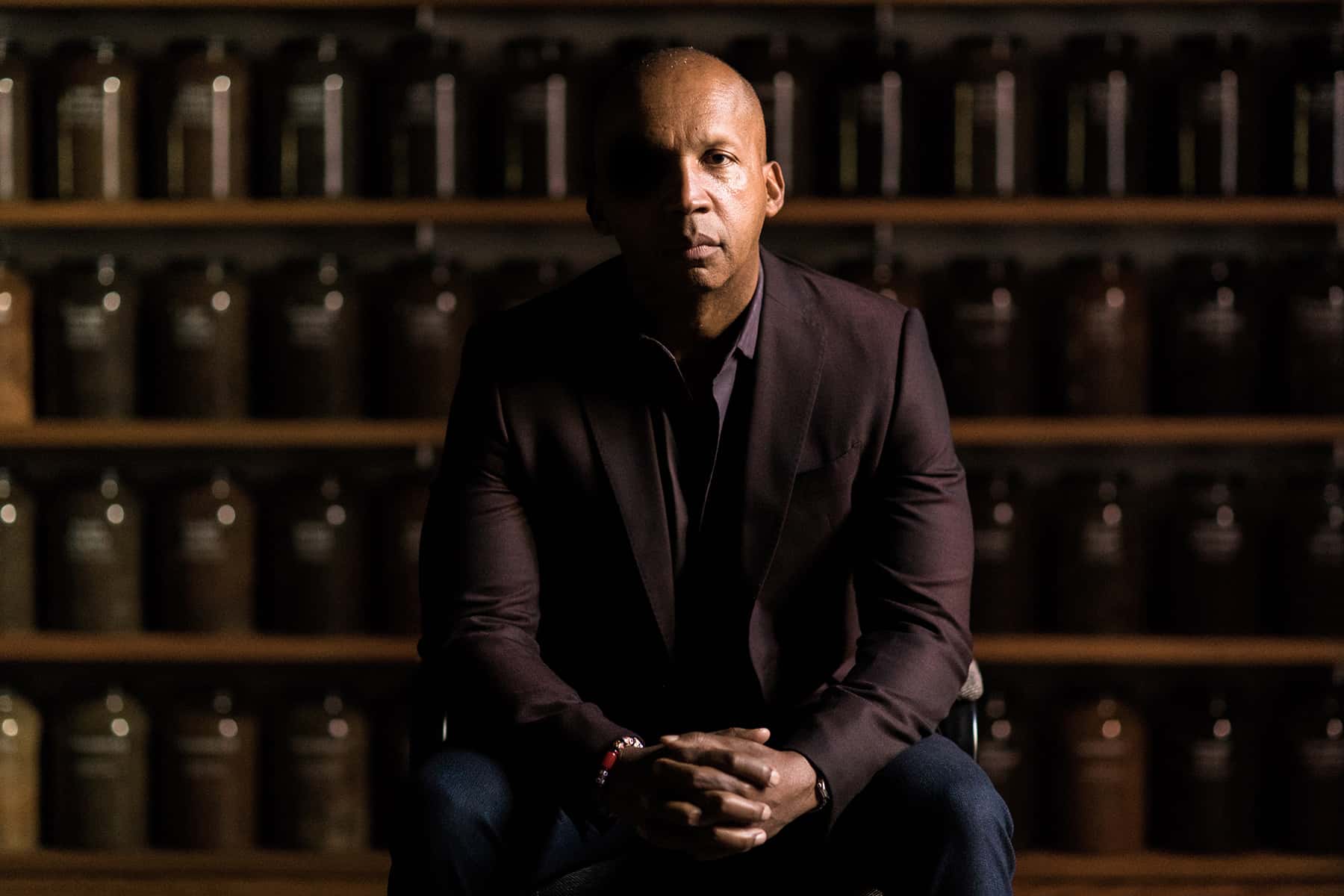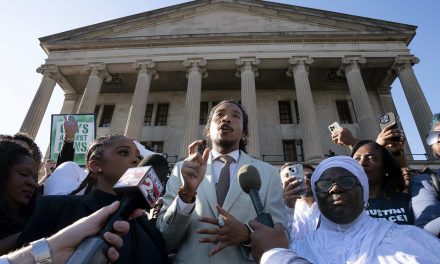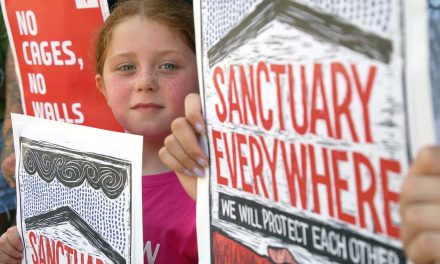
“The death penalty symbolizes whom we fear and don’t fear, whom we care about and whose lives are not valid… We have a system of justice that treats you much better if you’re rich and guilty than if you’re poor and innocent. Wealth, not culpability, shapes outcomes.” – Bryan Stevenson
People sometimes ask me where the motivations for the articles I write come from. At times there is a conversation that sparks me to look deeper into something. Sometimes the articles come from long simmering thoughts about topics that piqued my interest a while ago. At other times the articles are very personal.
My wife and I recently went to see the movie Just Mercy. The film is based on the book by the same title written by Alabama based attorney Bryan Stevenson. I first saw Mr. Stevenson giving a TED Talk online many years ago. I was immediately drawn to the genuineness of his story telling. He seemed to be very humble and caring as he spoke about his clients. The bulk of his early work in Alabama was with men on death row.
[Spoiler alert for those who have not seen the movie, I will give details of what happened.]
The prison depicted in the film is Holman Correctional Facility in Atmore, Alabama, 121 miles southeast of Montgomery and just 52 miles from Mobile in an unincorporated section of Escambia County. The city has a population of just over 10,000. Holman prison opened in December 1969. Currently all 170 men and 5 women condemned to death by the state of Alabama are held in Holman. Of these, 86 are black men, 82 are white men; two are men of unidentified race, and there is 1 black woman and 4 white women.
The prison is severely understaffed with just 50 correctional officers employed but 165 authorized positions as of last October. Like many overcrowded prisons around the country, finding correctional officers to fill these positions is really quite a challenge.
In July of last year there were a total of 692 people incarcerated in a facility designed to house 581. By October the number of inmates in Holman had risen above 1,000 according to Alabama Department of Corrections Commissioner Jeff Dunn. Due to this overcrowding and staff shortages Holman has been the site of tremendous amounts of violence among those incarcerated there in recent years. In December 2018 an inmate was killed in Holman and three prisoners were stabbed during a big fight in April 2019.
Unfortunately that is not the only violence occurring within the walls of Holman. There is state sanctioned violence as well. State sanctioned, top-down violence is considered legitimate in this country while citizens committing acts of violence is seen as illegitimate violence.
On May 30, 2019 convicted murderer Christopher Lее Price was the most recent person executed in the electric chair at Holman. Two hundred nineteen men and women have had their lives taken by the state of Alabama since 1927. Alabama has executed 153 black people in the last 93 years. All but one of them was male. On January 24, 1930 Silena Gilmore became the only black woman executed by the state of Alabama.
One hundred ninety six days later in Marion, Indiana three young black boys would be facing a different set of executioners. On August 7, 1930 Abram Smith, Thomas Shipp, and James Cameron were forcible taken out of the Grant County jail by a lynch mob of 15,000 angry whites, intending to get “justice” for the murder of 23-year-old Claude Deter and alleged rape of his girlfriend Mary Ball. Ball was never raped but in Indiana in 1930 a mere allegation of black on white sexual assault was all it took for a bloodthirsty mob to break into the jail.
Available records show that 455 men were executed for rape in the United States between 1930 and 1972. 405 of them were black men and most of the accusers were likely white women. No white man has ever been executed for the non-homicide rape of a black woman in American history. During slavery days there were no laws that protected black girls or women from rape. During the Jim Crow years custom dictated the same rule. Untold numbers of black females were sexually abused with no legal recourse against the rapists.
Indiana had more Ku Klux Klan members than any other state in the country during the 1930s and they were represented in the Marion mob that used sledgehammers and crowbars to break into the jail.
Two of the three young blacks would never see their day in court. 16-year-old Cameron would be the lone survivor of the lynching. His friends, 18-year-old Abe Smith and 19-year-old Tommy Shipp would be brutally beaten before being killed and hung from a large tree right next to the Grant County courthouse. A photograph of this lynching would become the most iconic image of this very American of rituals and would be the inspiration for the song Strange Fruit.
Many people have seen the black and white photograph of an attentive group of white men, women and children posing in the foreground as two black victims are hanging from nooses in the background. Professional photographer Lawrence Beitler was commissioned to take the photograph as a keepsake and sold thousands of them, receiving request from around the world.
Those who see the photograph are generally unaware that there were supposed to be three bodies hanging from that tree in Marion. “Jimmy” Cameron was taken out of the jail, and had a noose placed around his neck as he was beaten unmercifully by the mob members and taken to the base of the tree before miraculously being released. Cameron wrote about how he survived the lynching in his memoirs A Time of Terror: A Survivors Story. He also went on to found America’s Black Holocaust Museum at the age of seventy-four.
“Justice” was meted out by a mob instead of the criminal justice system, but it really did not matter at that time in America. Ultimately the result would have been the same. Shipp and Smith would have been executed in the electric chair by the state of Indiana just as Silena Gilmore was by Alabama earlier that year.
Lynch mobs murdered twenty blacks across the country in 1930. Sixty-three blacks were legally executed that same year. Alabama executed three black men, Edgar Harris, Jack Brown, and Roy Miles as well as one white man, Jack Jarvis, in 1930.
Alabama mobs lynched two hundred ninety nine blacks from 1882 through 1968. From 1608 through 2002 the state of Alabama executed 623 blacks. In the eyes of many black people, the systems are synonymous. They see state executions as nothing more than modern day lynchings. Steven B. Bright writes that the death penalty in America is a “direct descendant of lynching” and that racial terror lynchings eventually gave way to executions. America had received a great deal of criticism from around the world for spectacle lynchings of blacks and was challenged as a moral authority.
By 1915, state sanctioned executions were more common than lynchings for the first time. Two-thirds of the people executed in the 1930s were black. By 1950 blacks were one-third of the South’s population but 75% of people executed in the South were black. In the last forty-three years 82% of all executions have been in the South.
As of July 2019, there were 2,656 Americans sitting on death row; 42% were black, 42% were white and 13% were Hispanic. California led the way with 729, followed by Florida (348), Texas (224), Alabama (177), Pennsylvania (154), North Carolina (144), Ohio (140), and Arizona (122). The number of death sentences imposed has dropped rapidly since it peaked at 295 in 1998. Just 34 such sentences were given in 2019. Twenty-one states have now abolished the death penalty, nine of those since 2004. In March 2019 California Governor Gavin Newsome imposed a moratorium on executions in that state. He stated at the time, “I do not believe that a civilized society can claim to be a leader in the world as long as its government continues to sanction the premeditated and discriminatory execution of its people.”
Bryan Stevenson has spent the past 30 years at the Equal Justice Initiative (EJI) working to provide free legal assistance to those on death row. The organization that he founded in Alabama in 1989, has worked with people around the country. According to their website the EJI:
“Provides legal representation to people who have been illegally convicted, unfairly sentenced, or abused in state jails and prisons. We challenge the death penalty and excessive punishment and we provide re-entry assistance to formerly incarcerated people.”
EJI has worked to exonerate 140 people from death row according to the movie. Nationwide 166 people have been exonerated and released from death row since 1973. Over 1,500 people have been executed across the country over the same time span. This means simply that for every nine people executed, one has been exonerated. With this error rate in executions, is it any wonder that people don’t trust the system. EJI list these as the primary factors in wrongful convictions:
- erroneous eyewitness identifications
- false and coerced confessions
- inadequate legal defense
- false or misleading forensic evidence
- false accusations or perjury by witnesses who are promised lenient treatment or other incentives in exchange for their testimony.
In 2018 a record 111 exonerations involved witnesses who lied on the stand or falsely accused the defendant according to the National Registry of Exonerations. Fifty of these cases were found to be cases where no actual crime even happened. Despite this, most Americans have a great deal of faith in the criminal justice system. This faith is significantly less in the black community. In 2019 two people were exonerated after spending over 40 years on death row.
According to the Death Penalty Information Center 2019 end of year report, “At least 19 of the 22 prisoners who were executed this year had one or more of the following impairments: significant evidence of mental illness (9); evidence of brain injury, developmental brain damage, or an IQ in the intellectually disabled range (8); or chronic serious childhood trauma, neglect, and/or abuse (13). Four were under age 21 at the time of their crime, and five presented claims that a co-defendant was the more culpable perpetrator.”
There are clear issues with the system. The death penalty became legal again in 1976 after being ruled unconstitutional in the 1972 case Furman v. Georgia. The Supreme Court case pondered the question of whether the death penalty constitutes cruel and unusual punishment in violation of the Eighth and Fourteenth Amendments.
A study was done providing substantial evidence of racial bias in the use of the death sentences imposed on blacks. The Court held that the imposition of the death penalty in these cases constituted cruel and unusual punishment and violated the Constitution because there were no clearly rational standards in how it was used. Over the next several years states and the federal government re-wrote their death penalty statutes to alleviate these concerns. The 1976 case, Gregg v. Georgia led to the death penalty being allowed again after a three-year moratorium on executions.
Since it came back in 1976, 1,513 people have been executed; 844 whites, 516 blacks, 128 Hispanics and 25 others. The murder victims for whom these people have been executed have been overwhelmingly white. Seventy-six percent of the victims avenged by executions since 1976 have been white, fifteen percent black and seven percent Hispanic.
Since 1976 a total of 187 blacks have been executed for killing other black people compared to 294 blacks executed for killing white people. Just 109 black men have been executed for killing black women. The overwhelming majority of people black men kill are other black men but only 115 black men have been executed for killing other black men. Only 21 whites, including several serial killers, have been executed for killing blacks since 1976. Fifty-five percent of all of the white victims of blacks who’ve been executed have been females (162 of the 294).
One of the main characters in the book and film is Walter McMillan. A white man, Ralph Bernard Myers, is pressured by police into giving perjured testimony to receive leniency in the murder of eighteen-year-old Ronda Morrison, a white dry-cleaning clerk. Myers was implicated in the murder of Morrison and initially denied that McMillan was involved.
Jamie Foxx does a phenomenal job portraying the man who was falsely accused eventually convicted and placed on death row for killing Morrison in Monroeville, Alabama. Monroeville is the town made famous by Harper Lee’s Pulitzer Prize wining book To Kill A Mockingbird.
“Justice is forever shattered when we kill an innocent man.” – Walter McMillan
In Mockingbird, Attorney Atticus Finch defends a black man, Tom Robinson, who has been falsely accused of raping a white woman. Finch loses the case and Tom is convicted and eventually shot in the back trying to escape. For many whites that grew up loving the book and film starring Gregory Peck, it is an inspirational story.
I see it as just another in a long line of white savior stories. What amazes me is how white people are so inspired by an attorney who loses a case. At the end of the book his black client Tom Robinson is convicted, and brutally killed. Blacks who read the book in school had to endure the usage of the word nigger over and over throughout the book and then see the black man convicted and killed at the end. We are then somehow supposed to be inspired like white people are by the “courageous” Atticus Finch.
Mockingbird is required reading for many high school students around the country. I recently had a black female student tell me how uncomfortable she was in a class filled with white classmates as the discussion of the use of the word nigger was brought up as they were reading the book.
What’s most disheartening about the book for me is that we know there were no real Atticus Finch’s protecting black people in Alabama or anywhere else in 1930. The system chewed black people up and spit them out in Alabama, Texas, Virginia Mississippi and many other states for decades after our two-and-a-half centuries of enslavement ended.
The story of Just Mercy, both the film and the book, is a story of finding justice within a system that purportedly is built for that purpose but clearly does not work that way. Walter McMillan was placed on death row for a year and three months by the local sheriff while awaiting his trial as a reminder to him of what was to be his fate. His trial lasted just a day and a half. Despite dozens of alibi witnesses saying he was at a church fish fry he was found guilty. The jury sentenced him to life in prison but Judge Robert E. Lee Key overrode their verdict and sentenced McMillan to death in the electric chair at Holman, as was allowed by Alabama law. He spent six years on death row before his exoneration and release in 1993.
The courageous and brilliant effort of Bryan Stevenson and his staff saved Walter McMillan, unlike Atticus Finch, who was fictitiously fighting the same system. Bryan Stevenson and his staff endured six years of death threats as they waded through the slow process of bringing justice to light for McMillan after discovering exculpatory evidence in 1988.
“I am deeply troubled by the way the criminal system treated me and the difficulty I had in proving my innocence… I am also worried about others. I believe there are other people under sentence of death who like me are not guilty…when you are poor and under sentence of death you worry about a lot of things. One of the biggest worries is whether you’ll get the kind of legal assistance you need to save you from execution…For many death row inmates, it takes years to get the kind of legal representation and investigation necessary to prove your innocence.” – Walter McMillan testifying before the U.S. Senate Judiciary Committee in 1993
Bryan Stevenson inspired me when I read Just Mercy; Atticus Finch did not inspire me when I read Mockingbird. After reading Just Mercy I did something I had never done before, I wrote Bryan Stevenson a letter. I have read countless numbers of books in my life but this was the only time I was inspired to write a letter to the author.
In the letter, I told Mr. Stevenson how much his work meant to me. I said that the incredible relationship he develops with his clients is so inspiring, considering that the reputation of lawyers in our popular lexicon is so negative. I also thanked him for the work of saving so many people from death row and arguing successfully at the U.S. Supreme Court to end the use of death as punishment for those convicted of committing crimes as children and winning a case making it unconstitutional to send people to prison for life for crimes committed as children.
I met Bryan Stevenson at a talk in Racine less than a year after writing the letter. He had just finished signing some books and I approached him and introduced myself. I told him about my work with lynching survivor Dr. James Cameron at America’s Black Holocaust Museum. Mr. Stevenson told me that he had met and spoken to Dr. Cameron multiple times, and knew his story well. Then I mentioned to him that I wrote him a letter because of how much the book resonated with me emotionally.
“Reggie, I did read your letter.” – Bryan Stevenson
At this point he told me that he read the letter I wrote. Of course I did not believe him. I thought he was just trying to make me feel good. Then he quoted something from the letter that touched him. I knew at that moment that this incredibly famous attorney and award-winning author had indeed read my letter. I was shocked but it felt really good. We chatted for a few more minutes and he had to go to the auditorium to give his talk. I’ll never forget that day.
Several years later when he opened up The National Memorial for Peace and Justice in Montgomery, Alabama I wanted to be there. I had a prior commitment to give a talk and missed attending the grand opening. This memorial “is the nation’s first memorial dedicated to the legacy of enslaved black people, people terrorized by lynching, African Americans humiliated by racial segregation and Jim Crow, and people of color burdened with contemporary presumptions of guilt and police violence.”
This description is actually erroneous. America’s Black Holocaust Museum founded in 1988 was actually the first memorial museum of this type. Dr. Cameron’s vision and foresight to name the experiences of blacks in this country a holocaust was ahead of his time. Stevenson himself acknowledged the role Cameron played in getting him to better understand this history and to tell these stories in the way he does.
It is an incredible moment in America when we can honor the victims of racial hatred and bigotry that have for too long been left out of American’s conversations and classrooms. Mr. Stevenson, much like my mentor Dr. Cameron, wanted to use the historical lens to point a light at America’s past mistreatment of those of us of African descent. I’m inspired by both of these incredible men and hope to make the trip to Montgomery this year to pay homage to the memory of Abram Smith and Thomas Shipp.
I am truly fortunate to have crossed paths with these two brilliant, hard working, loving, and dedicated American heroes. My work includes following in Dr. Cameron’s footsteps and using the resources provided by Mr. Stevenson to educate and ask people around the country to have different conversations about race and racism.
It is critically important that we as a nation have the conversations out loud that black people have been having in their homes, barber shops and churches forever in this country. Different communities are coming to understand the importance of creating memorials to this ugly past. Milwaukee will soon have a memorial to George Marshal Clark who was lynched on the corner Water and Buffalo in 1861. America’s Black Holocaust Museum will soon reopen as a memorial museum in the city.
For far too long whites have denied the veracity of the stories we have told of this horrific lived experience as blacks in America because it flew in the face of the lies they have been told about the nation’s history. Let’s wake up to the reality that white Americans have a lot to learn about their history and need to become self-reflective to truly understand the role they’ve played.
As other nations grapple with ugly truths of their past and honestly talk about them in the form of truth and reconciliation councils, we too must walk down this path. Black people cannot give up hope of finding that magical place called justice in the country that has treated us so poorly for so long. These words from the film stood out to me the most. Bryan Stevenson says in a courtroom scene that,
“Hopelessness is the enemy of justice.”
Bryan Stevenson and Warner Bros. Pictures
Our mission of transformative journalism means that we are editorially independent. Our staff determines what is important news to report on, and in what voice to speak on issues. No one influences our opinion, and no one edits our editors. We are free from commercial bias and are not influenced by corporate interests, political affiliations, or a public preferences that rewards clicks with revenue. As an influential publication that provides Milwaukee with quality journalism, we depend on public support to fulfill our purpose. Our award-winning photojournalism, columns, interviews, and features have helped to achieve a range of positive social impact that enriches our community. Please join our effort by entrusting us with your contribution. Your Support Matters – Donate Now















